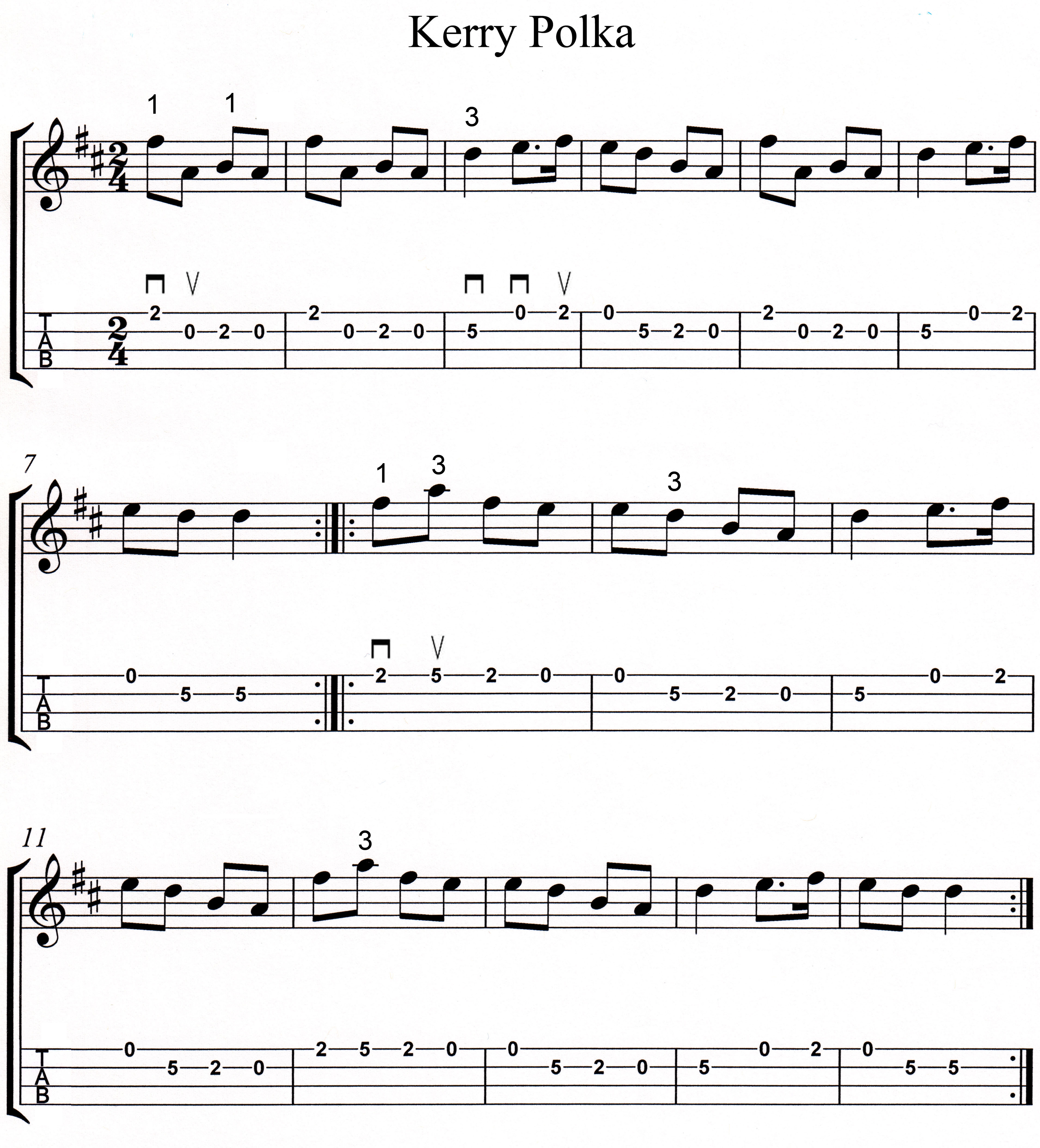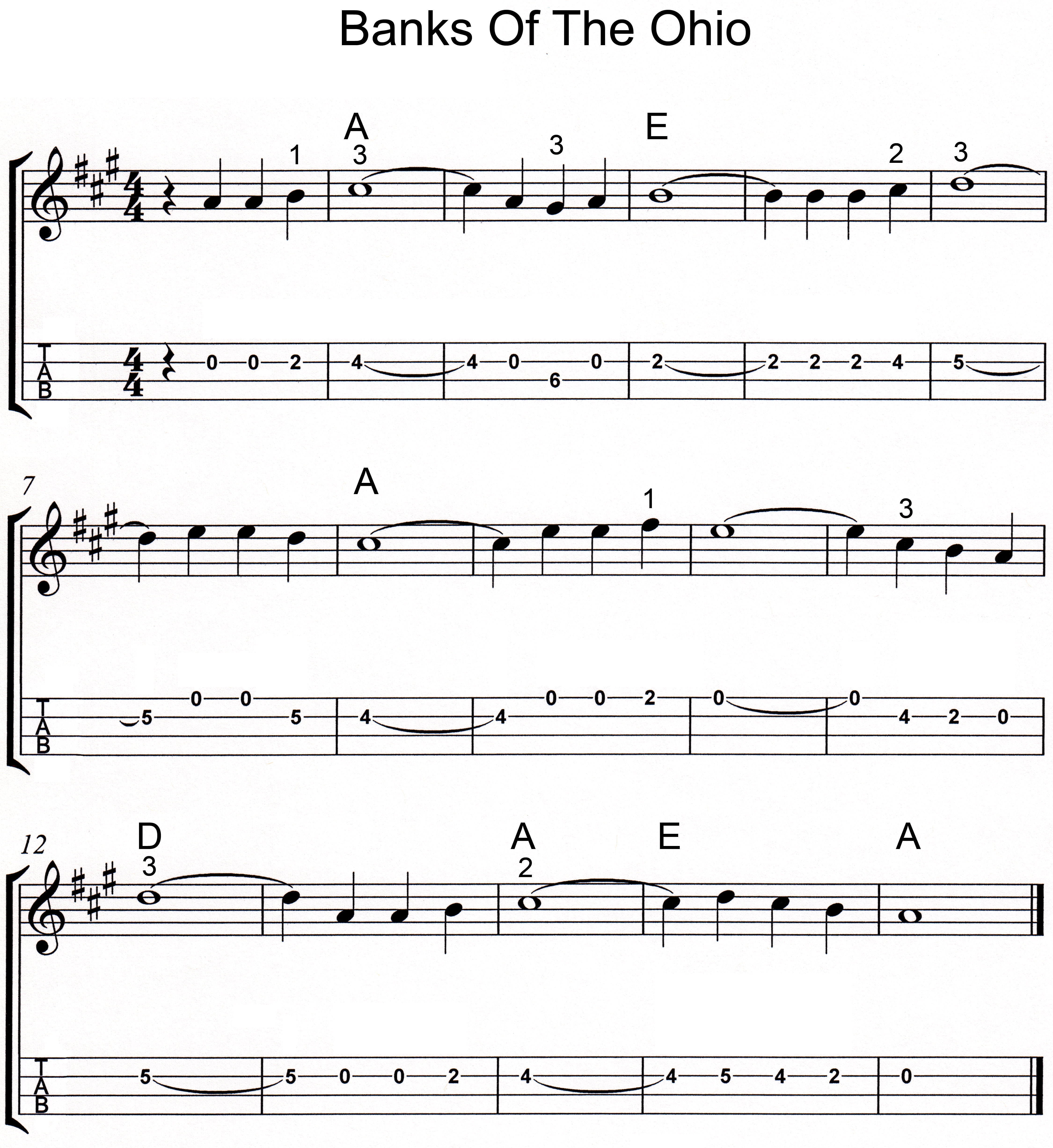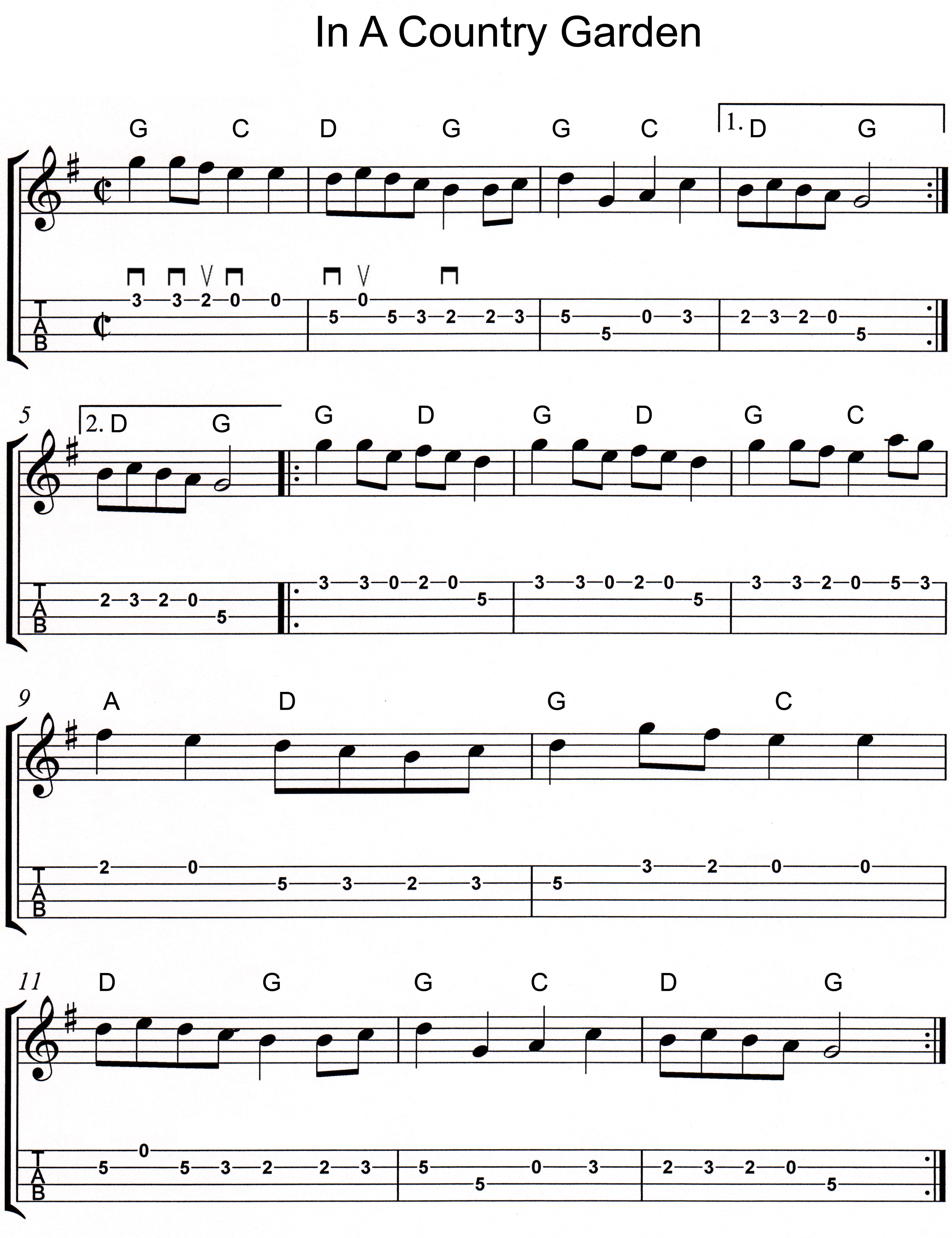
In this installment, we're going to continue with the focus on playing more single note runs because this is such an important aspect of your playing. Whether as melodic fills between verses or in playing an actual
part during the instrumental section of a song, you cannot escape that you will be called upon to play melodic passages.
In Country and Bluegrass, musicians take turns playing the "lead" in a "round", where each instrument does a turn at playing the melody or taking a turn in the instrumental section during a song.
So the first tune up is called Kerry Polka an old traditional song. This one is pretty easy. Just pay attention to the dotted eighth notes!

Play slowly, working on just getting it clear. once relatively smoothed out, bring in the metronome to help regulate your tempo. Fingering is noted and reasonably intuitive, as is the picking, which is also noted to get you moving. General rule: play down strokes on the beat notes, up strokes on the '&' of the beat.
The next tune is also traditional, and pretty basic, called Banks Of The Ohio. It shouldn't take much effort to play well.
Notice the swoopy line that connects two of the same note together. If you are unfamiliar with this, here is what it means: This is called a tie. Its function is to direct you to hold the note for the original note's beat duration, and also the duration of the second note. In the song, you are connecting a whole note (4 beats) to a quarter note (1 beat); you are to hold the note for five full beats. This occurs throughout the song. And you will encounter it in various ways in the future, too.
Start out slow and just play through the notes the best you are able. Picking pattern is up to you, but alternating is often the rule. Once reasonably smooth, begin to pay attention to tempo and time.

As with anything you are striving to learn, pay attention to details and technique now, not later. Good technique helps you progress more consistently. It also will help you learn things quicker over time as it becomes more intuitive and natural in your playing.
For the last tune, we go to an old traditional song called In A Country Garden. You'll notice the C with a line through it in the time signature location. The C means "common time". When there is a line through it, that means "cut time", which is to say, double quick. It doesn't always mean to play the tune "fast". It is often just a writing device. But to keep the song lively, you should learn to play it at a pretty good clip.
You will also notice "boxes" labeled "1." and "2.". If you're not already familiar with them, these are called endings; 1st ending and 2nd ending. And they mean exactly what they sound like. You go into the first ending the first time through that part, and then you jump the first ending and to into the second ending the second time through that part.
The picking pattern is pretty intuitive, and at the beginning of the tune you are given a basic approach to follow throughout. Fingering is also intuitive. Everyone has different size hands, so use your best judgment
and common sense. Your fingers should never get tied up in knots.

As you get more dexterous in your ability to play single note runs, begin to see where you can apply these ideas in songs you may already be playing. Sometimes the mandolin plays single note fills between lyrical phrases rather than comp'ing on chords. Every song is different, and there are more than a few ways any song can be approached. But anything you do must compliment the greater whole. One approach may work for one song, but sound entirely awful on another.
When playing covers of popular songs, listen to multiple versions to get an idea what other people are doing. You can either copy one specific version, or create a hybrid by stealing bits from a few versions to create your own take on the song.
The bottom line is to just play, play, and play some more!
That's it for this entry.
Now, go start makin' some foot stompin' music!